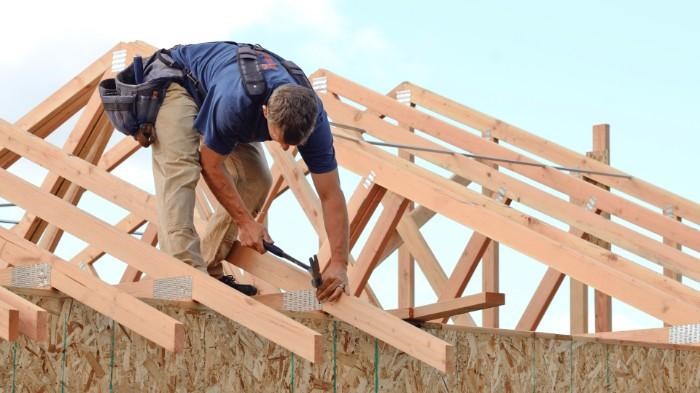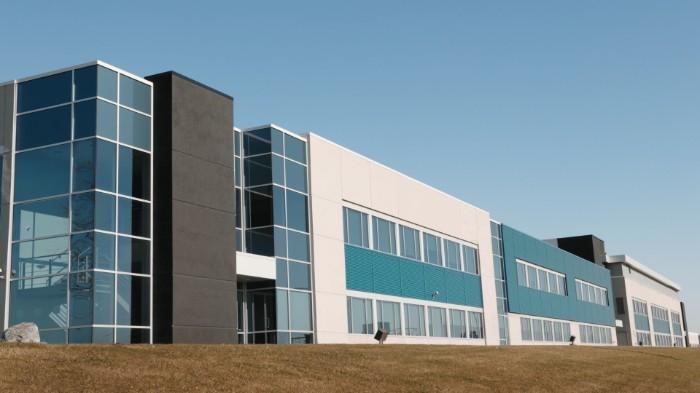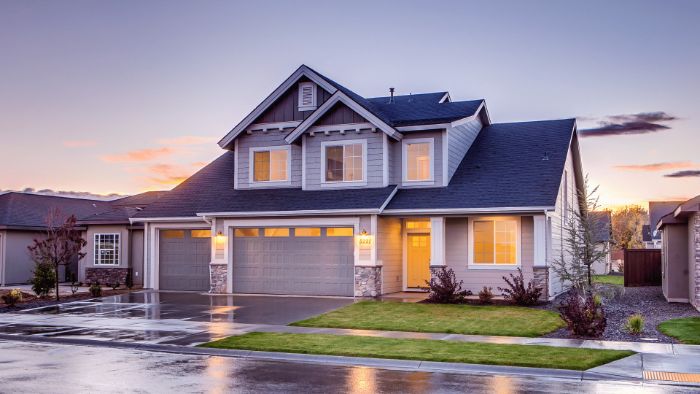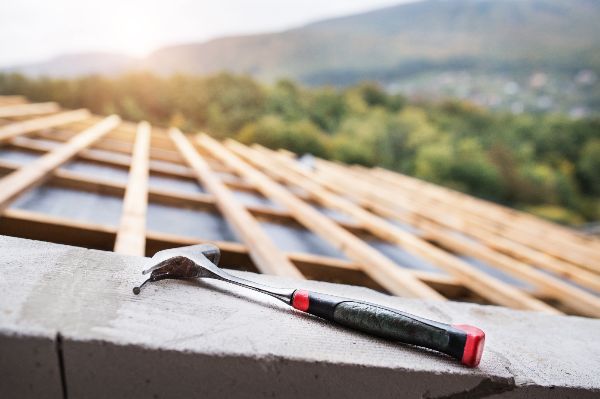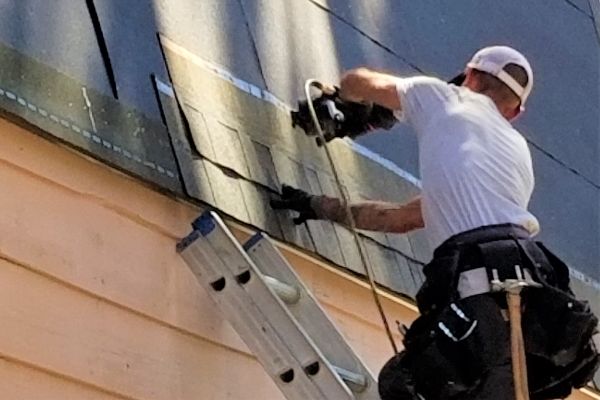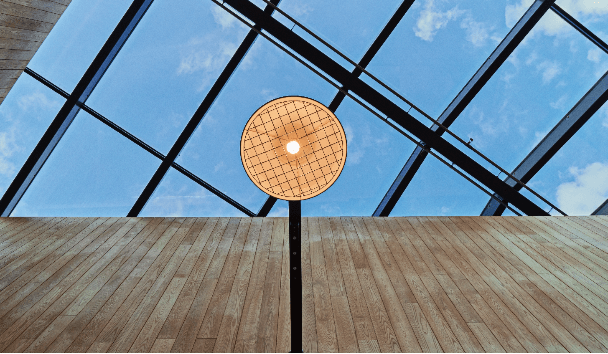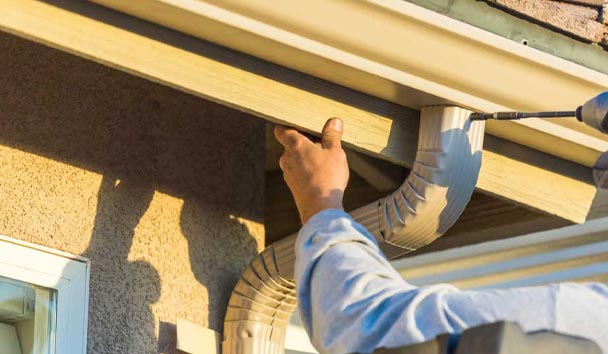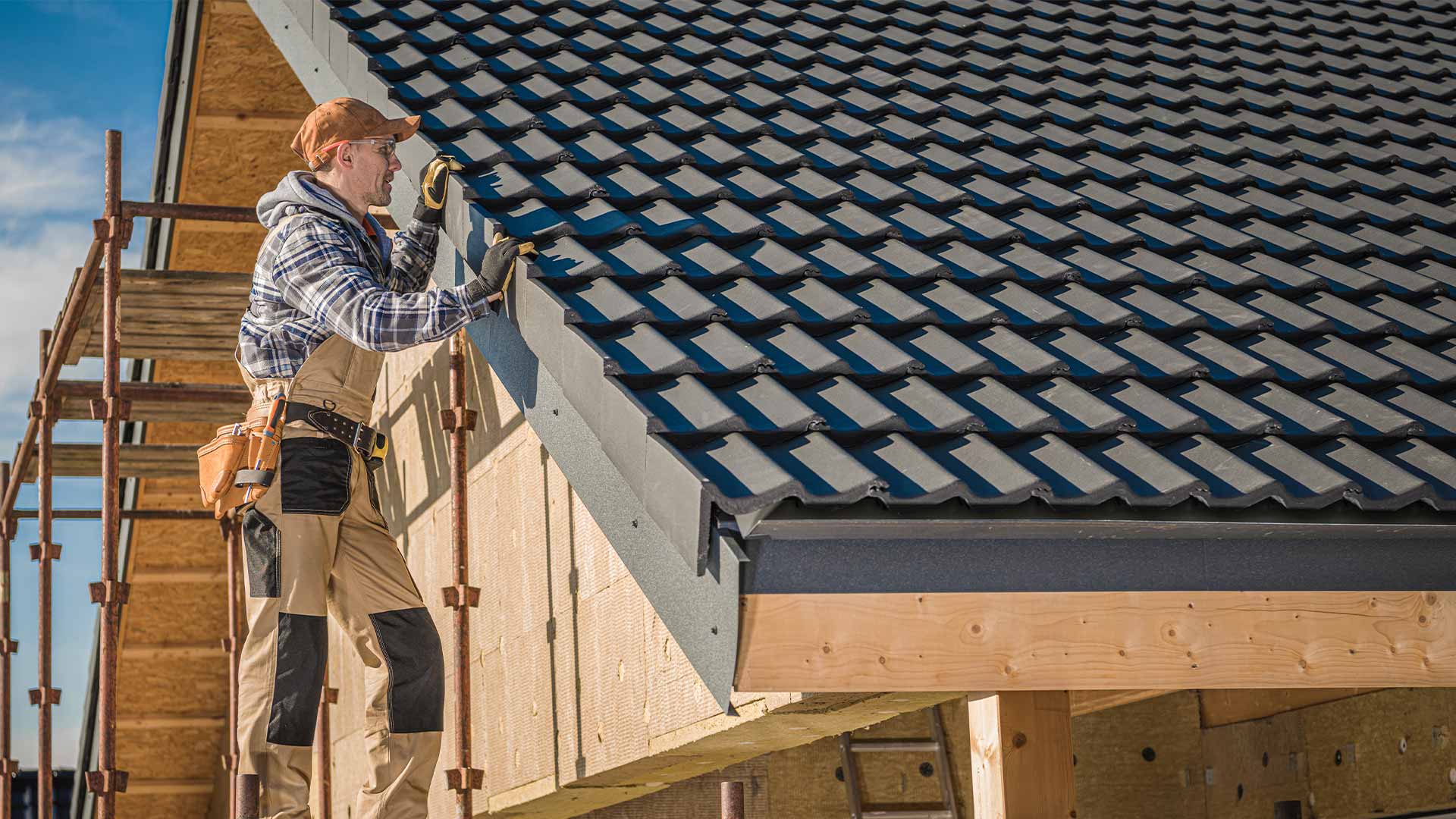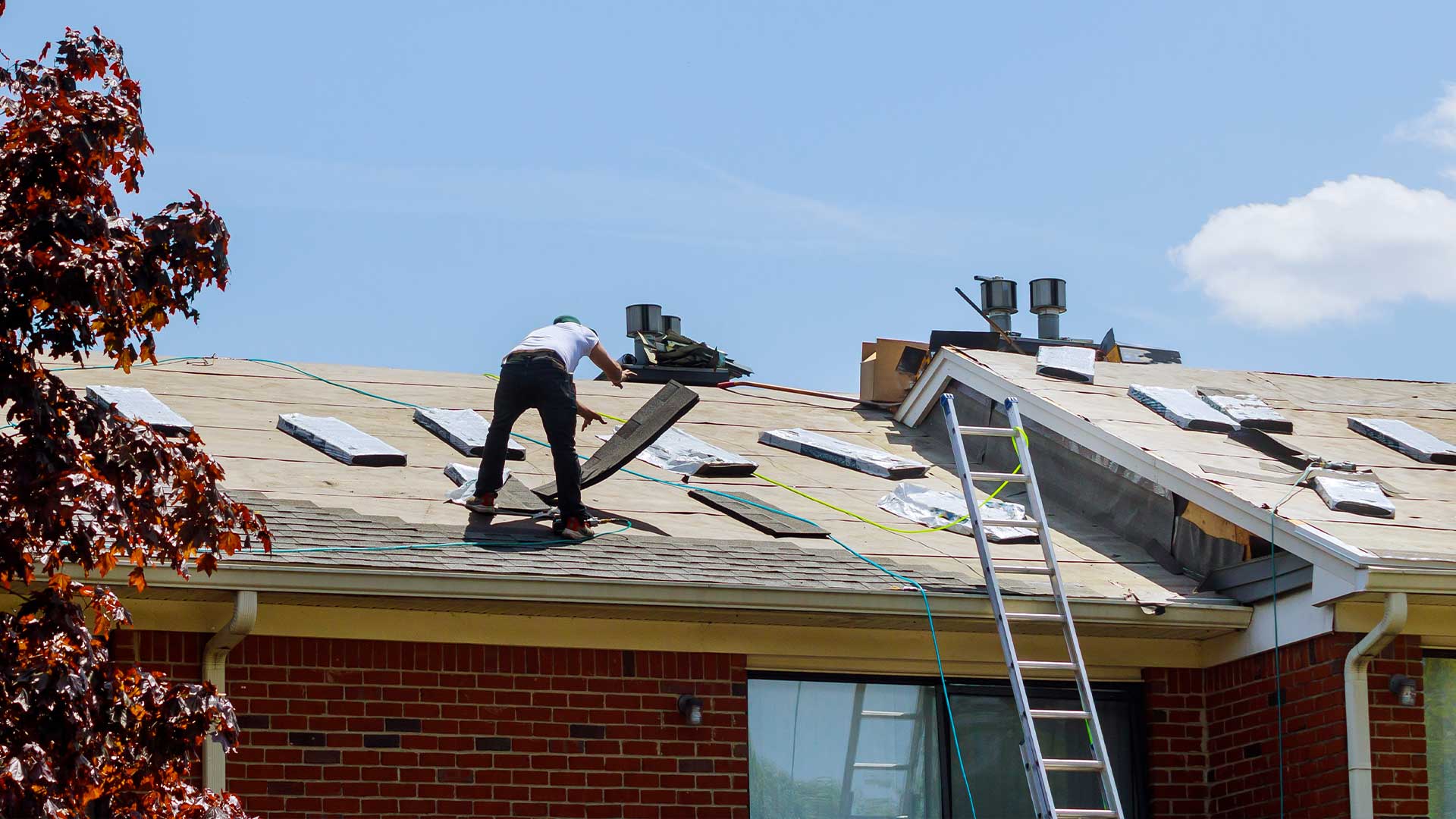Insulating Roof Rafters: A Guide to Keeping Your Home Safe and Sound
Every home needs to be properly insulated in order to maximize energy efficiency and keep your family safe. Roof rafters are no exception, as they provide structural support and often need an additional layer of insulation. In this guide, we will discuss why insulating roof rafters is important, the materials you'll need for the job, and how to properly insulate them. So let's get started on keeping your home safe and sound!
The Benefits of Insulating Roof Rafters
Are you looking for an effective way to reduce energy costs and make your home more comfortable? Insulating roof rafters offers numerous benefits that can help you achieve both of these goals. Here are some of the main advantages:
1. Increased Energy Efficiency
By insulating your roof rafters, you will create a barrier against heat transfer from the outside, which helps keep your home at a comfortable temperature all year round. This reduces your reliance on artificial heating and cooling systems, leading to lower energy bills.
2. Improved Home Comfort
Insulation helps protect your home from excessive temperatures and humidity levels, creating a more pleasant indoor environment for occupants. You'll also experience reduced levels of noise from outside sources like traffic.
3. Greater Durability & Longevity
Roof rafter insulation acts as a protective shield against the elements, helping to extend the life of your roof materials and minimize costly repairs. It also prevents moisture buildup in the attic, which can cause water damage over time.
4. Better Air Quality
The additional layer of insulation reduces the infiltration of airborne pollutants and allergens into the home, improving overall air quality. This is especially beneficial for those with allergies or asthma who may be sensitive to certain airborne particles.
Aside from these benefits, having insulated roof rafters helps to increase the value of your home by making it more attractive to potential buyers. So if you're looking for ways to enhance energy efficiency, lower your electricity bills and guarantee utmost comfort in your home, don't overlook the potency of insulating roof rafters!
How to insulate roof rafters?
Insulating your roof rafters is an important part of constructing or renovating a roof, as it helps to protect your home from the elements and provides much-needed stability. Here's what you need to know to get started:
Step 1: Gather the Necessary Materials
Before you begin, make sure you have all the necessary materials and tools to complete the job. You will need insulation batts, tape and staples, a utility knife, screwdriver, drill and bits, caulking gun with sealant, protective goggles, and gloves.
Step 2: Prepare Roof Rafters
You will need to clear the space between your rafters so there is ample room for the insulation batts to fit in comfortably. Start by using a screwdriver to remove any nails or screws that may be in the way. Then use your utility knife to carefully cut away any debris that could interfere with your insulation installation.
Step 3: Measure and Cut Insulation Batts
Once your area has been cleared of obstacles, measure the length of your rafters so you know how much insulation you need. Make sure to add two inches on either side for extra coverage. Cut your insulation batts accordingly and make sure they fit snugly against each other without leaving any gaps or crevices that could let air pass through them. Double-check measurements before continuing to the next step.
Step 4: Staple Insulation Batts
Once you've measured and cut your insulation batts properly, it's time to start stapling them into place. Use a staple gun to fasten them securely onto the roof rafters at regular intervals along their length. Make sure each staple is firmly seated in place without skipping or breaking off. This will hold your insulation in place until you can move on to sealing it around the edges.
Step 5: Seal Insulation Edges
The last step is sealing off any gaps around the edges of your insulation batts where air might leak out or come in from outside sources such as vents or chimneys. To do this, apply a generous amount of sealant around the perimeter of each batt with a caulking gun making sure not to leave any gaps whatsoever between them and surrounding surfaces like walls or ceilings.
Once done correctly this should ensure no air gets through while also keeping moisture out during rain storms or high-humidity days throughout different seasons.
And if you want an expert in the field to do this on your behalf, get a free quote now!
Types of insulation for roof rafters
When insulating your roof rafters, there are a variety of materials available to choose from:
1. Fiberglass Batt
Fiberglass batt insulation is one of the most common roof rafter insulation. It comes in large, pre-cut, and packaged sections easily slid between rafters. This type of insulation offers excellent air sealing and sound absorption properties and great thermal performance.
2. Spray Foam
Spray foam insulation is a great option for roof rafters as it can fill in small crevices and form atight seal. It is also highly effective at reducing heat loss and increasing energy efficiency.
3. Cellulose
Cellulose insulation is made primarily from recycled paper products and is perfect for filling gaps between roof rafters. It offers good thermal performance, is fire resistant, and is an environmentally friendly option.
4. Rigid Foam
Rigid foam insulation is another great choice for roof rafters. It provides excellent thermal performance and can fill small gaps or be installed as a continuous layer of insulation across the entire rafter. It also offers good noise-reduction properties.
5. Mineral Wool
Mineral wool is made from molten rocks and offers excellent thermal performance. It is also highly fire-resistant and can fill gaps between your roof rafters. Additionally, it has good sound absorption properties, which makes it ideal for reducing outdoor noise levels.
The cost of insulating roof rafters
The cost of insulating roof rafters can vary anywhere from $0.5 to $2.5 per square foot, depending on several factors such as the materials used, size of the house, type of insulation, complexity of the job, and labor costs.
Conclusion
Insulating your roof rafters is essential to ensure your home is comfortable and energy-efficient throughout the year. If you’re looking for a reliable partner for insulating roof rafters, get a free quote now from Universal Roofing & Construction!
Our team of experienced professionals is ready to provide advice and guidance every step of the way so that you get maximum protection from heat loss or gain.
Contact us today to learn more about our services & locations!
Commercial Roofing: Your Business' Best Defense Against the Weather
Commercial roofing is a specialized construction area that requires energy efficiency and economic considerations. The choice of roofing materials often depends on the type of facility and its geographical location. Single layers of synthetic options are becoming increasingly popular as they offer energy efficiency, durability, and long-term value. Whatever your commercial roofing needs, be sure to do your research ahead of time for an economical and energy-efficient solution that best suits the nature of your business.
How to Choose a Commercial Roofing System for a Commercial Building?
- When selecting a roofing system for a commercial building, it is important to consider the climate and weather conditions in the area. Think about if the roofing system should withstand high winds, heavy rains, and/or snowfall.
- It is also important to consider the size and weight of the roofing system. The building should be able to support the weight of the roofing system without sagging or collapsing.
- The roofing system should also be energy efficient. The materials used in the system should help to keep the building cool in summer and warm in winter.
- Class A-rating fire-resistant systems can help protect the building from the risk of devastating fires and the destruction they can bring. This is because these systems are composed of materials that possess excellent resistance against high temperatures, minimizing their combustibility and protecting the structure's occupants and materials inside.
- Finally, the roofing system should be aesthetically pleasing. The materials used in the system should complement the style of the building.
Benefits of Commercial Roofing
Commercial roofing provides many benefits for businesses:
1. Aesthetic Appeal
Commercial roofing can add an aesthetic appeal to your business that can attract customers and help you stand out from the competition. A well-designed and installed commercial roof can also increase the value of your property.
2. Energy Efficiency
Commercial roofing can also help to improve the energy efficiency of your business. A properly insulated and sealed commercial roof can adjust the temperature according to the weather, which can help reduce energy costs.
3. Durability
Commercial roofs are designed to be durable and long-lasting. They are typically made from materials that withstand severe weather conditions, such as high winds, hail, and heavy snowfall. Commercial roofs are often coated with reflective materials that can help keep them cooler in the summer months, prolonging their lifespan.
4. Low Maintenance
Commercial roofs require little maintenance and are easy to care for. Most commercial roofing systems do not require regular cleaning or repairs, making them a low-maintenance option for business owners.
5. Safety
Commercial roofs can also provide a safe environment for employees and customers. They are typically made from slip-resistant materials that can help to prevent accidents, and they are often equipped with drainage systems that can help to reduce the risk of flooding.
6. Storm Protection
A commercial roof can protect your building during severe weather events. A properly installed roof can help to resist wind damage, hail damage, and even fire damage.
7. Longevity
A commercial roof is designed to last many years, with some roofs lasting up to 50 years or more. This long lifespan means that you won't have to worry about replacing your roof anytime soon, which can save you money in the long run.
8. Value
A commercial roof can add value to your property by increasing curb appeal and energy efficiency. A well-maintained roof can also last for many years, increasing your property's resale value.
Types of Commercial Roofing
Commercial roofing comes in many types, all with a different set of characteristics:
1. Metal Roofing
Metal is one of the most popular materials used for commercial roofing due to its durability, longevity, and energy efficiency. Made from metal panels or tiles, it is low maintenance and can last up to 50 years with proper installation. This type of roofing offers great resistance to wind, water, fire, and impacts. It also reflects heat away from the building, creating a cooler interior environment in hot climates.
2. Asphalt Shingles
Asphalt shingles are a cost-effective option for commercial buildings when compared to other types of roofing materials. They are made from fiberglass or paper mats covered with asphalt and ceramic granules that offer protection from sun rays, water damage, and rot. This type of roof is easily maintained as periodic inspections are recommended to identify any worn spots or areas that need repair or replacement.
3. Built-Up Roofs (BUR)
Built-up roofs (BUR) are composed of multiple layers of waterproof material, such as bitumen and reinforcement fabrics, that form an almost impenetrable barrier against moisture and the elements. BURs can be topped with gravel or cap sheets which provide additional protection against UV radiation and foot traffic wear and tear while also offering increased fire resistance.
4. Single Ply Membrane Roofs
Membrane roofs are constructed using single-layer membranes such as Ethylene Propylene Diene Monomer (EPDM), Polyvinyl Chloride (PVC), Thermoplastic Polyolefin (TPO), or Polyurethane Foam (PUF). These membranes are lightweight yet durable enough to withstand long-term exposure to sun rays, wind, rain, and snow without deteriorating quickly. They also provide excellent insulation properties, which help keep the interior temperature comfortable during hot summers and cold winters.
5. Modified Bitumen
Modified bitumen is similar to built-up roofs as they both consist of multiple layers of material overlaid together; however, modified bitumen has a much more flexible membrane than BURs do, which allows it to conform better in extreme temperatures without cracking or becoming brittle over time. It is extremely resistant to UV radiation, so it can be used in areas where direct sunlight is a problem and offers superior protection against high winds as well as hail storms.
Should you invest in a new roof for your business?
Deciding on something as important as your roof can be difficult. That's why we offer free consultations so that you can learn more about all our options and find the best solution for you. We want to ensure you're completely satisfied with your new roof, so contact us today for a free consultation on commercial roofing for your business!
Upgrade Your Home with Sturdy and Durable Residential Roofing Solutions!
Residential roofing is incredibly important and requires specialized expertise and a keen eye to ensure safety, longevity, and the most effective return on investment. Residential roofing comes in all shapes and sizes to fit your customized needs and preferences. Whether you have a large or a small house, a specialized residential roofing service can help complete it.
With years of experience and attention to detail, we at Universal Roofing and Construction provide the highest quality service, assuring homeowners that their roofs will be structurally sound and aesthetically pleasing, from shingle replacement and repairs to complete roof installation.
How to Choose the Right Residential Roofing
When it comes to residential roofing, the right choice could be the difference between a lasting investment and a headache in the making. Make the right decision after following these expert tips:
1. Choose an Experienced Residential Roofing Contractor
When choosing a roofing contractor, it is important to choose one who is experienced and reputable. A good way to find a contractor is to ask for recommendations from friends or family members who have had work done recently. You can also check online reviews to see what others have said about a particular contractor. Once you have found a few potential contractors, schedule an estimate so you can get an idea of the project's cost.
2. Make sure to get multiple estimates
When getting quotes from roofing contractors, it is important to get multiple estimates. This will allow you to compare prices and find the best deal. Be sure to get at least three estimates before making a final decision.
3. Be sure to ask questions
When meeting with potential roofing contractors, ask plenty of questions. Some important questions include the contractor's experience, warranty information, and estimated completion date. Asking questions will help you feel more comfortable with your decision and ensure you get the best possible service.
4. Choose a roofing material that will best suit your needs
There are different types of roofing materials available on the market today. When deciding on a material, it's essential to consider its resilience against wear and tear, how well-suited it is for your environment, and whether you like the way it looks. All of these factors will help determine which material best suits your needs. Some popular roofing materials include asphalt shingles, metal roofs, and tile roofs.
5. Be sure to budget for unexpected costs
When budgeting for your roofing project, be sure to leave room for unexpected costs. There is always the possibility that something could go wrong during the project, which could end up costing more money than originally anticipated. By budgeting for unexpected costs, you can avoid being caught off guard if something does happen.
What are the Benefits of Residential Roofing Repairing
Maintaining a safe and secure home starts with having a resilient roof over our heads. Residential roofing repair is an important job that not only protects our homes but also provides numerous long-term benefits:
1. Protects Your Home's Structure
Your roof protects the rest of your house from the elements. If the roof is in poor condition, it can allow water to leak into your home, damaging your walls, ceilings, and floors. Repairing your roof will help to prevent water damage and keep your home in good condition.
2. Increases Your Home's Value
Are you considering selling your home anytime soon? Repairing your roof will increase its value! Buyers are often put off by homes that need work, so a well-maintained roof will make your home more appealing to potential buyers.
3. Saves You Money on Energy Bills
If the roof is in poor condition, it won't be as effective at insulating your home from the heat or cold. Your heating and cooling system will have to work harder to maintain a comfortable temperature, leading to higher energy bills. Repairing your roof will eventually help to keep your energy bills down, resulting in valuable cost savings.
4. Prevents Health Problems
If your roof leaks, mold and mildew can grow inside your home. This can cause health problems for you and your family, especially if you have allergies or respiratory problems. Repairing your roof will prevent the growth of these harmful substances.
5. Protection from the Elements
Another benefit of repairing your roof is that it can help to protect your home from the elements. A well-maintained roof will keep water, snow, and ice from damaging your home's structure and leading to costly repairs. Additionally, a well-sealed roof will help keep out pests.
6. Safety
Keeping your roof in its best condition will help keep you and your family safe. A damaged or poorly maintained roof can pose a safety hazard, as it may collapse or allow water or other materials to enter your home. By repairing any damage to your roof and keeping it in good shape, you can help to prevent accidents and injuries.
7. Peace of Mind
Finally, repairing your roof can give you peace of mind knowing that your home is well-protected from all the external elements. A new or repaired roof will give you years of worry-free protection from the sun, wind, rain, snow, and ice, allowing you to enjoy your home without worry.
Why Choose Universal Roofing and Construction for All Your Roofing Installation, Repair, and Replacement Needs?
Our staff of highly trained roofing professionals use only the highest quality materials to deliver superior results quickly and efficiently every time. And we don't take shortcuts, so you can rest assured that no matter how large or small the project may be, Universal Roofing and Construction stands by its work for years to come. So when it's time for those vital investments in your home, put your trust in one of the most experienced professionals; you won't be disappointed. To get started with your free roof inspection, call us today!
How Long Does It Take to Fix a Leak?
If you’ve ever experienced a leaky roof, you know it can be a troublesome and expensive problem to fix. Not only can leaks lead to flooding and water damage, but also mold growth, which can further increase the cost of repairs.
Having a leaking roof is disruptive to your daily life, so you want the problem fixed as soon as possible. Fortunately, Universal Roofing is here with the expertise and experience to ensure that your roof stays in top condition.
With years of extensive training and hands-on experience, we are equipped to take on any job related to roof maintenance and repair. From fixing leaky roofs to construction, we offer the highest quality of services at an unbeatable price. But how long does it take to fix a leak?
The answer depends on several factors such as:
1. The severity of the issue
The first factor is the severity of the issue. Is the leak coming from a single area or multiple areas? Are there other symptoms such as mold, sagging ceilings, and/or water spots? These types of questions help contractors determine the extent of repairs that need to be made.
If only minor repairs are needed, then it may take less time than if more extensive damage has been done.
2. Experience level of the contractor
The experience level of the contractor can also affect how long it takes to fix a leaking roof. A more experienced roofer with extensive knowledge of roofing systems and materials may be able to complete repairs more quickly than an inexperienced contractor who doesn’t have much experience in this area. When choosing a contractor, make sure they are knowledgeable and experienced in order to ensure that your repair job will be completed correctly and efficiently.
3. Size of the project
The size of the project is another important factor that affects how quickly a given repair can be completed. A large project, such as replacing an entire roof, may take significantly longer than fixing a small leak due to its complexity and scope. Therefore, it’s important for homeowners to provide detailed information about their project so contractors can accurately estimate how long it will take them to complete it.
Takeaways
Generally speaking, repairs for a small leak can be completed within a few hours depending on complexity. If a larger area needs repair or if several areas need attention, it may take a couple of days or more due to safety considerations and necessary materials. For example, replacing shingles or tiles would require more time than simply replacing a sealant around pipes or ventilation systems.
Universal Roofing is dedicated to delivering excellent customer service while maintaining safety protocols in accordance with industry standards. Our team will evaluate each situation carefully before beginning any work so that we can provide an accurate estimate of the time it will take to complete the task.
We also strive for maximum efficiency so that customers can get back into their homes ASAP without compromising quality or safety standards. When it comes to fixing leaky roofs with Universal Roofing, homeowners are guaranteed professional results from knowledgeable contractors who understand both technical details and customer needs. By utilizing our expertise and high-quality materials along with strict adherence to safety protocols, you can have peace of mind knowing that your roof will soon be strong and secure again, no matter how long it takes! So what are you waiting for? Give us a call today!
The 7 Hottest False Ceiling Designs of 2022
Are you looking for a stylish way to update your home? False ceilings are one of the hottest trends to hit home design. From a subtle decorative touch to jaw-dropping statement pieces, false ceilings can instantly transform your space and increase your home's value.
Whatever your design style and budget, there’s a false ceiling that is perfect for your home! Some of the most popular false ceilings of 2022 include Plaster of Paris, wood, and gypsum.
To inspire you, we've compiled the hottest false ceiling designs of 2022.
-
Ceiling with Hidden Lighting
The concealed lighting system is the best way to make a room feel warm and inviting. It will also add elegance to any space. Ceilings with hidden lighting typically operate alongside the primary lighting in the room rather than replacing it.
False ceilings with hidden lights are quickly gaining traction as one of the hottest home design trends of 2022. The hidden lighting system is a great way to highlight a focal point, such as an eye-catching heirloom or particular space in a room.
-
Two-Tone Ceiling
Plasterboard ceilings are one of the most versatile and simplest ways to create ambiance in a room. Because the look is created through paint, two-tone ceilings can instantly change the aesthetics of a room. For a moody and dramatic feel choose bold or dark colors. If you want a warm and cozy space simply darken or lighten the existing paint color for a two-tone ceiling.
Contemporary looks are achieved by painting the plasterboard false ceiling two distinct colors. Two-toned ceilings let you change the vibe of the room without committing to permanence. However, carefully choose the ceiling's two-tone hue to avoid making the room lookbusy.
-
Geometric Patterns
Modern home decor is characterized by straight, clean lines, simplicity, and elegance without needless preparation. Geometric patterned false ceilings are a signature feature in contemporary design. Square structures, in particular, look fantastic in modern homes. Square geometric false ceilings draw attention to a space, making a room appear more intimate.
-
Circular Ceiling Designs
Straight lines and curved lines can be employed in very diverse ways. As a result, a false ceiling with a circular shape will produce an entirely different feel than one with squares. Curved plasterboard ceilings are more traditional, evoking a timelessness all its own.
Adding elegant ceiling lights into the false ceiling further exemplifies opulence. You’ll find that traditional wooden, circular false ceilings make a beautiful contrast to white ceilings.
-
Wooden False Ceiling
The woodwork on false ceiling designs instantly elevates home design. Intricate carvings on wooden false ceilings add a dramatic and high-end touch to a room. Wooden false ceilings break up the monotony in large homes.
There are many inventive ways to incorporate woodwork into a false ceiling, all of which will produce handsome results. Use a full wooden false ceiling for dramatic results or small accents for a more subtle design feature.
-
Plaster of Paris
Plaster of Paris, sometimes known as POP, is necessary for creating false ceilings. This adaptable material is used to create many different false ceilings in various designs. POP false ceiling designs are a fashionable and popular way to incorporate design details into your home simply and affordably! Dining areas are one of the top places to incorporate POP faux ceiling design.
-
Layered False Ceilings
Visual interest is always produced through layering. To make the ceiling more elaborate, place another layer of POP over the rectangular "tray" appearance.
Create a focal point on your POP artificial ceiling by hanging a trendy hardwood slab low from the center to the top of your dining table.
The best ceiling designs are known for their trendy and alluring design, are budget-friendly, and easy to install.
Need Help With False Ceilings?
Universal Roofing & Construction can help you take your home design to a new level by creating inviting and stylish spaces with false ceilings. False ceilings improve the overall appearance of your home and increase your home's value. The professionals at Universal Roofing are experts in installing false ceilings.
If you are interested in speaking with one of our experts or requesting a free quote, visit our website or call 706-705-5094.
5 Types of Inexpensive Terrace Roofing
Terrace roofing is a great way to update your terrace or patio. Adding an inexpensive terrace roof gives the space a fresh new look and lends way to enjoying your terrace throughout the year.
If you're considering adding a roof to your terrace, you'll want to learn more about the options available. You may have questions such as, "which terrace roofing is best for my space?" or "which terrace roofing will fit my budget?" Use this article as a guide to learn more about inexpensive terrace roofing so you can select the best style for your home.
Let’s get started!
There are two major components to terrace roofing – materials and designs. Glass, wood, and fabric are just a few material options available for terrace roofing. The applications are even more diverse. As a matter of fact, you can often tailor inexpensive terrace roofing to your specific requirements and preferences.
We've curated five types of inexpensive terrace roofing to get you started.
Awning Terrace Roofing
One of the most common types of terrace roofing are awnings. Awnings are simple and low-cost yet still look elegant. The awning itself refers to the overhang frame construction. The roofing materials are waterproof for added protection and easy maintenance. Awning terrace roofing allows you to enjoy your outdoor space even more because they keep your patio shaded during peak sun hours and dry on rainy days. Awnings’ versatility in terms of color and material double as a decorative accent for your terrace.
A fixed awning is typically more economical than retractable awnings. However, retractable awnings are more versatile, letting you uncover the area when you desire.
Stretch Fabric Terrace Roofing
Another incredible way to improve the aesthetics of a terrace is to install a stretch fabric roof. With its adjustable suspension and beautiful finish, this sail-like stretch fabric is perfect for showcasing the terrace's ambiance through a medley of rich and distinctive materials.
Light and airy for the summer, stretch fabric roofing provides an alternative to the sunshade. Stretch fabric terrace roofing is popular in windy regions. The versatility of the suspension system means that a sail can be used as a terrace roof in various configurations, depending on the needs of the space and your budget. With the right fabric, a sun sail can even double as a rain cover.
Vine Terrace Roofing
With one section joined directly to the house and the other supported by either wooden or metallic pillars, vine roofing is quick and easy to install. The growth of the vines that shade the terrace contributes to its charming rustic style giving the space a sense of intimacy.
One of the major advantages of vine terrace roofing is the sheer number of vine plants available for selection. The downside to vine roofing is the time it takes for the vines to fully cover the terrace. And it needs to be groomed on a regular basis. However, the results don't disappoint. Couple the aesthetics with vine terrace roofing’s affordability and you can’t go wrong adding this roofing style to your home!
Wooden Rail-Style Terrace Roofing
Wooden rail-style terrace roofing has a uniqueness all its own – and the results are jaw-dropping. This style of terrace roofing gives unobstructed exposure to sunlight and warmth, making it ideal for warding off winter's chill with an infusion of uplifting, revitalizing heat and light.
Wooden rail-style terrace roofing requires a small amount of wooden materials and is considerably easy to install. Of course, hardwoods like oak or teak are preferred for their durability and ability to withstand harsh weather. Wooden rail-style terrace roofing is one of the best-valued roofing options for your terrace.
While the wooden roofing layout is ideal for homes in tropical climates – placed near a garden or the pool – metallic/steel material is more versatile. The steel rail-style roofing adds a modern flair and can even be painted to give your home the look you desire.
Reed Roofing
Tatching or reed roofing is the process of layering dried natural materials like palm branches, sedges, rushes, wheat reed, or straw to build a solid roof that can repel sunlight and water. It's inexpensive and inviting. Many people prefer reed roofing because it is sustainable and eco-friendly.
However, the materials needed for reed roofing, primarily naturally sourced materials, may be difficult to find in your area. Fortunately, some manufacturers produce synthetic versions of reed roofing materials that are still economical and easy to install.
It's important to consider that the actual terrace roofing cost depends on variables such as the size of your terrace, material selection, labor costs, shipment costs, and so forth. If you want to discuss the terrace roofing options best suited for your home and budget, we can help! Visit our website to schedule a consultation or get an estimate. At Universal Roofing, we are experts in all types of roofing. And we are always ready to help, whether you need a free roof inspection or a bit of friendly advice.
8 Types Of Beautiful Modern Ceilings That Are Easy To Install - An Ultimate Guide!
When it comes to home decoration, ceilings are usually overlooked. However, a unique ceiling can add an element of sophistication to any room. An innovative, modern ceiling design does wonders for the aesthetics of a home and increases resale value.
Modern ceilings are becoming increasingly popular today because they are an inexpensive way to give rooms a fresh, updated look. In addition, modern ceilings are versatile, beautiful, and provide sound insulation.
If you’re considering home renovations you’ll want to add modern ceilings to your list. Use this helpful guide on beautiful, modern ceilings and you'll be on your way to improving the overall ambiance of your room.
If you have questions on ceilings and how they tie into your roof, call the professionals at Universal Roofing. They are experts at home repair and can help you with the process.
Here’s a quick guide to beautifully modern ceilings.
8 Types Of Modern Ceilings
- Coffered ceiling
A coffered ceiling is a group of recessed panels, usually rectangular and square. These ceilings are often used in high-end homes, hotels, churches, and libraries. Coffered ceilings give homes a classic, even luxurious aesthetic as well as adding structural strength to the ceiling. The term “coffered” means indention. Coffered ceilings use upward indentions framed by beams arranged in a grid pattern of rectangle, square, octagons, or other polygonal shapes. Expect to pay between $3 to $30 per square foot for a coffered ceiling.
2. Tray Ceiling
If you’re going for a simple, clean look, tray ceilings are ideal. Tray ceilings actually look like an upside down tray. The cost of tray ceilings, also referred to as “recessed” or “inverted” ceilings, averages $3 to $9 per square foot. With each added step or "level" around a raised center, tray ceilings lower themselves, creating a three-dimensional effect. They can add dramatic effects to a space and even make rooms appear to have higher ceilings.
3. Cathedral Ceiling
A cathedral is a flat ceiling with a raised central point that resembles the ceiling of a cathedral. Cathedral ceilings are known for their inverted V-shape, with a peak at the tip and a slope on the sides. These ceilings are often used in dining rooms, living rooms, and bedrooms. Using wood for cathedral ceiling variety also helps reduce energy costs and regulate the temperature in your space. Cathedral ceiling panels run about $10 to $20 per panel.
4. Coved Ceiling
You don’t see many coved ceilings these days, but they are a fun way to add architectural detail to a room. The cost of coved ceilings average $3 to $30 per square foot. Coved ceilings are rounded, curved framing detail where the wall and ceiling meet. The coved ceiling is a simple yet powerful design that eliminates the hard 90 degree angle giving a room a softer feel. These ceilings look great in any room and eliminate the need for crown molding. Moreover, its installation is very easy and quick.
5. Barrel Vault Ceiling
Barrel vault ceilings are one of the most popular ceiling options in modern homes. A barrel vault ceiling is a style that resembles a large wine barrel giving a room a tunnel-like feel. It's a simple design, but presents with great sophistication. Barrel vault ceilings have a slanted, vertical wall on one side and a curved ceiling on the other. The slant creates a visual illusion of depth. This is a beautiful ceiling that you can use to create a sense of grandeur in your living room. The cost of a barrel vault ceiling is roughly $18,000 to $25,000.
6. Astroid Curve Ceiling
An astroid curve ceiling gives a modern transitional look to homes. The curved lines and carved-out design creates an eye-catching focal point in any room. There are multiple astroid curve ceilings including Alpha, Omega, or starburst. You can even design your own astroid curve ceiling. Astroid curve ceilings can be used on both tray and flat ceilings. It's a classic modern ceiling that can add an elegant touch to your living room.
7. Dropped Ceiling
A dropped ceiling is a center panel that hangs below the main structural ceiling. Also referred to as “suspended” ceilings, a dropped ceiling can be achieved with drywall or drop. The average cost of a dropped ceiling is $6.00 per square foot. Removing dropped ceilings is easy, so repairs and inspections can be performed.
8. Stretch Ceiling
Stretch ceilings, or suspended ceilings, are made of two basic components: a perimeter track and a lightweight fabric membrane attached to the track. The great thing about stretch ceilings are they don’t require surface preparation, are non-toxic, unaffected by moisture, easy to clean, and easy to install. Expect to pay about $6 to $10 per square foot for a stretch ceiling.
Conclusion - The Bottom Line!
There are many types of beautiful modern ceilings. From classic and rustic to contemporary and futuristic, decorative ceilings are a great way to give your home a modern, updated look. The type of modern ceiling you choose will depend on your personal taste, budget, and room style.
If you are looking to have a decorative ceiling installed, call the friendly experts at Universal Roofing. We can expertly install your ceiling at affordable prices, giving your home a fresh style.
Gutter Replacement in GA Price: A Cost-effective Solution for Your Home
As a homeowner in GA, you know that there are always going to be repair and replacement costs associated with keeping your home in good condition. One area that you may not think about very often is your gutters. However, the reality is that your gutters play a vital role in protecting your home from water damage. If they become damaged or worn, they can no longer do their job properly. This can lead to serious problems like water leaks, foundation damage, and even mold growth.
The good news is that gutter replacement is a relatively simple and cost-effective solution. Replacing your gutters will not only improve the appearance of your home but will also help to protect it from future water damage. There are a few things to keep in mind when you are considering a gutter replacement in GA:
1. Materials
First, you will need to choose the right materials for your home. There are a variety of options available, and each has its own set of advantages and disadvantages. For example, aluminum gutters are lightweight and won't rust, but they're also more susceptible to denting. Vinyl gutters are durable and easy to install, but they can become brittle in cold weather. Moreover, concrete gutters are extremely durable, but they're also very heavy and expensive.
Ultimately, the best material for your gutters will depend on your specific needs and preferences. So be sure to do your research before making a final decision.
2. Seamless vs sectional gutters
You will also need to decide whether you want seamless or sectional gutters. Seamless gutters are more expensive but are less likely to leak than sectional gutters. This makes them a good choice for homes in Atlanta, where heavy rains are common. However, sectional gutters are easier to install and can be a better option for budget-minded homeowners.
3. Reputable contractor
Once you have chosen the type of gutters you want, you will need to find a reputable contractor who can install them properly. You want someone who is experienced and knowledgeable, and who will be able to install your new gutters correctly. In Atlanta, Georgia, there are a number of different contractors to choose from. But how do you know which one is right for you? Here are a few things to keep in mind:
- First, ask around for recommendations. Talk to your friends, family, and neighbors and see if they have any recommendations for contractors in the area.
- Second, once you have a few names, do some research. Check out online reviews and see what other people have said about their experiences with the contractors you're considering.
- Finally, make sure you get several estimates before making a decision. This will help you ensure that you're getting the best possible price for your gutter replacement project.
With these three simple tips, you'll be able to find a reputable contractor who can get the job done right.
4. Installation
You'll need to make sure that your new gutters are properly installed. With a little careful planning, you can ensure your gutter replacement goes smoothly and protects your home for years to come.
In Atlanta, Georgia, we know a thing or two about rain. And we also know that gutters play a crucial role in keeping our homes safe from water damage. That's why it's so important to make sure that your gutters are in good condition and up to the task of protecting your home.
With a little research and planning, you can easily find the perfect solution for your home’s needs.
How to identify if the gutters need to be replaced?
If you're not sure whether or not your gutters need to be replaced, there are a few signs to look for. If they're sagging or pulling away from your home, if they're leaking or overflowing during heavy rains, or if they're simply old and decrepit, then it's time for a replacement.
How to Choose the Best Roof for Rainy Climate?
As any homeowner knows, the roof is one of the most important components of the house. It protects against the elements and helps to keep the interior of the home dry and comfortable. With so much riding on the roof, it's important to choose wisely when it comes time to select a new one. But with so many different types of roofs on the market, how do you know which one is right for you? Here are a few things to consider when choosing the best roof for a rainy climate:
1. Material
The first thing you'll want to look at is the material of the roof. Traditional asphalt shingles are not always the best choice for a rainy climate, as they can become saturated and start to leak. Metal roofs are a great option for rainy climates, as they are impervious to water and won't rot or mildew over time. You'll also want to make sure that any seams or valleys in the roof are properly sealed to prevent leaks.
2. Slope
Another important consideration is the slope of the roof. A steeper slope will help water run off more quickly, while a shallower slope will allow water to pool on the surface which can lead to leaks and damage over time. If you live in an area with high rainfall, you'll want to choose a roof with a steep slope to help prevent water infiltration.
3. Ventilation
In a rainy climate, it is especially important to have a well-ventilated roof so that moist air can escape. This will help to prevent mold and mildew from growing on your roof over time. Well-ventilated roofs also tend to be cooler in the summer, which can help to keep your energy bills down. When choosing a new roof, be sure to ask about ventilation options so that you can make the best decision for your home.
4. Warranty
Finally, you'll want to choose a roof that comes with a good warranty. In a rainy climate, your roof will be exposed to more wear and tear than in other areas, so it's important to choose a product that is backed by a manufacturer's warranty. This will ensure that you can get repairs or replacements if necessary.
By taking these factors into consideration, you can have the best roof for your home and prepare it for the rainy climate.
What is the Best Roofing material for Rainy Climates?
In a rainy climate, a metal roof can be the best choice for your home. Metal roofs are extremely durable and can withstand heavy rains and high winds. They are also fire resistant and can help to reflect heat away from your home, keeping it cooler in the summer. In addition, metal roofs are available in a variety of styles and colors, so you can find one that complements the aesthetics of your home. When it comes to choosing a roofing material for a rainy climate, metal is the clear winner.
The 5 Most Popular Roofing Materials
As any experienced homebuilder will tell you, the roof is one of the most important components of a house. Not only does it provide protection from the elements, but it also has a major impact on the overall appearance of the home. When choosing a roofing material, there are many factors to consider, including durability, cost, and maintenance requirements. With so many options on the market, it can be hard to know where to start. To help you narrow down your choices, here is a look at five of the most popular roofing materials.
1. Asphalt shingles
Asphalt shingles are one of the most popular roofing materials on the market. They're made from a fiberglass mat that's been impregnated with asphalt and then covered with mineral granules. Asphalt shingles are available in a variety of colors and styles, making them a popular choice for both new construction and home renovations.
One of the main advantages of asphalt shingles is that they're relatively inexpensive. They are also easy to install, which makes them a popular choice for DIY projects. However, one of the main disadvantages of asphalt shingles is that they're not as durable as other roofing materials. Asphalt roofing will typically last for 20 to 30 years, but it can be damaged by high winds and hail. Asphalt shingles also require more maintenance than other roofing materials. For example, you'll need to clean your gutters more frequently to prevent them from clogging with granules from the shingles. You'll also need to inspect your roof regularly for signs of damage.
If you live in an area with severe weather conditions, you may want to consider another roofing material such as metal or tile.
2. Metal roofs
Metal roofs are becoming increasingly popular due to their longevity and energy efficiency. Metal roofs can last for decades with proper maintenance, and they reflect heat away from the home, which can help lower cooling costs in warm climates. Metal roofs are made from a variety of materials, including aluminum, steel, and copper. They're also available in a range of colors and styles, so you can find an option that fits your home's aesthetic.
However, metal roofs can be more expensive than other roofing materials, are quite loud during rainstorms, and may require special installation techniques. But if you're looking for a roof that will stand the test of time, metal roofing is a great option.
3. Tile roofs
Tile roofs have been used for centuries due to their enduring beauty and fire-resistant qualities. Tile roofs come in a wide range of colors and styles, making it easy to find the perfect look for any home.
In addition, tile roofs are extremely durable and can last for decades with proper care. Although tile roofs can be quite heavy, reinforcement during installation can help to ensure that the roof will withstand the weight. With so many benefits, it’s no wonder that tile roofs are one of the most popular choices for homeowners.
4. Slate roofs
Slate roofs are another popular choice for homeowners due to their beauty and longevity. Slate roofs can last for centuries with proper maintenance, and they are available in a variety of colors and styles.
However, slate roof tiles can be quite fragile and may need to be replaced more often than other materials. As a result, homeowners should weigh the pros and cons of slate roofs before making a final decision.
5. Solar panels
Solar panels are an excellent choice for homeowners who are looking to reduce their carbon footprint. Solar panels convert sunlight into electricity, which can then be used to power your home. Not only will you be saving money on your energy bill, but you'll also be doing your part to help the environment.
Solar panels can be quite expensive to install, but they will eventually pay for themselves through the money you save on your energy bill. Maintenance costs can also be quite high, but solar panels are designed to last for many years with minimal upkeep. If you're looking for a way to save money and help the environment, solar panels are a great option.


